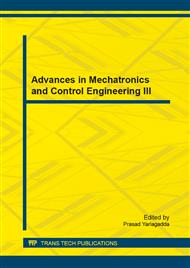p.19
p.23
p.28
p.35
p.39
p.43
p.47
p.51
p.55
Researching on the Single Lock Chamber Automatic Layout Algorithm
Abstract:
Arrange the ships reasonable as much as possible in the lock chamber, can help improving the traffic ability and the utilization rate of the lock. At present, it is not enough for the factors that considered in the automatic layout algorithm, such as: the safety distance between the ships, ship bottom sill depth. The algorithm can be further optimized. This paper will present a new automatic layout algorithm for single chamber which is able to enhance the efficiency of the chamber space and improve the traffic ability.
Info:
Periodical:
Pages:
39-42
Citation:
Online since:
October 2014
Authors:
Price:
Сopyright:
© 2014 Trans Tech Publications Ltd. All Rights Reserved
Share:
Citation:


